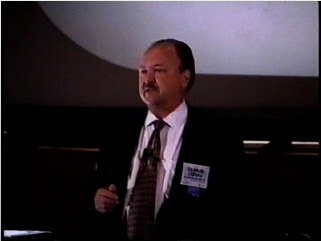 In real estate, they say that the three most important things are location, location, and location. In options, the three most important things are volatility, volatility, and volatility. Often neglected by option rookies, volatility is the cornerstone of an option professional's trading strategy.
In real estate, they say that the three most important things are location, location, and location. In options, the three most important things are volatility, volatility, and volatility. Often neglected by option rookies, volatility is the cornerstone of an option professional's trading strategy.
In its simplest form, expressed as the annualized percentage of the standard deviation, volatility measures how far a contract can be expected to swing from a mean price. A contract trading at 50 would have a volatility of 10% if it traded between 45 and 55 over a given period of time.
Historical volatility is just that: the volatility calculated (using closing prices) over a given period – 20 days, 20 weeks, one year, etc. Implied volatility is the volatility using current market prices. For example, using four primary option pricing inputs – futures price, settlement price, time until expiration and volatility – would result in a theoretical price.
By plugging in the current option price in place of the theoretical price and working backward, it would be possible to determine the volatility the current market is implying. (It is not mathematically possible to work backward and solve for implied volatility using an equation like the Black-Scholes model, but an approximation can be derived.)
Options on quick-moving, highly volatility contracts will demand a higher premium because of the increased possibility of such options being in-the-money. For example, an out-of-the-money option on a slow, non-volatile contract will have a lower premium than a comparable option on a volatile contact because there is a greater chance the volatile contract will shirt in price enough to put the currently out-of-the-money option in-the-money.
Astute options traders look at volatility figures to evaluate the potential of a trade, buying or selling options when volatility is exceptionally high or low. If a market is trading at historically low volatility levels, options premiums could be expected to rise as market volatility increases, presenting a buy opportunity. The revers is true for high volatility situations.
We hope that this short lesson series was helpful, and that you learned a little more about trading options!
Best,
The MarketClub Team


